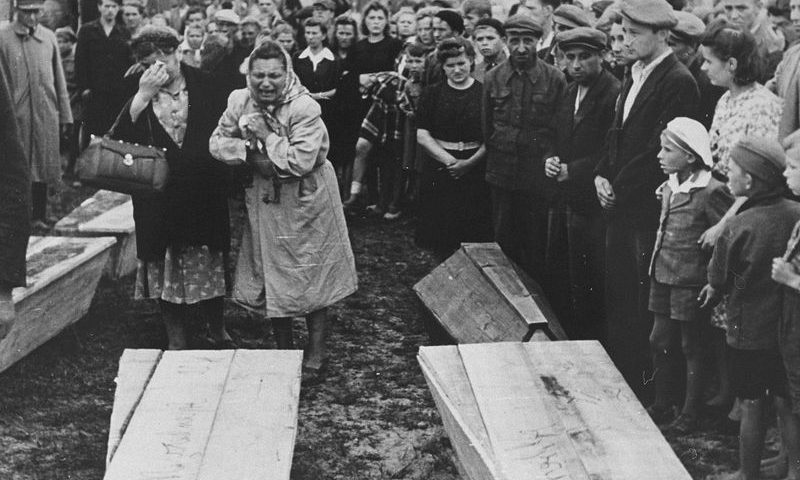Leiser Lajewski

My father, Leiser Lajewski, lived in Kielce, Poland until the Holocaust. After surviving the Holocaust in many concentration camps, including Auschwitz, he returned to Kielce with some of his friends who also survived. Their ambitions were to rebuild Kielce into a thriving Jewish community as it was before the Nazis destroyed it. At this time the community only consisted of about 200 people living in an apartment building at Planty 7.
A year after the war on July 4, 1946, there was a pogrom in Kielce. A Polish family reported to the local police that their nine-year-old son had disappeared three days ago. When the boy returned, he told a tale of a cellar full of the blood of murdered Polish children. A mob of community members, the Militia, and the Polish army stormed Planty 7 with rifles and grenades and sprayed the inside of the building with automatic weapons. My father was in the building at the time and was hit in the leg by a grenade. He was lucky to be rushed to the hospital where his uncle begged and bribed the doctors, who were able to save his leg. Sadly, 46 people were killed in the pogrom. The next day, the few survivors were driven away from Kielce in different directions. They moved to different countries – some to other European countries, Israel, and North America. My father and his relatives left Kielce and went to a DP camp in Germany. My father came to Canada in 1948, and his relatives went to the United States.
The picture above was taken the day after the pogrom. In the front row are the Jewish survivors, surrounding the coffins. My father is in the front row, the middle of the 3 men. Behind them are Polish people of Kielce who came to the funerals. This picture is in every Holocaust museum. The Kielce pogrom marked the end of a viable Jewish community in Poland.
Leiser Lajewski and his wife Celia Lajewski came to Toronto with the Garment Workers Scheme in 1948 and worked as a tailor for the rest of his life. His daughter, Ann Laski, lives in Toronto and has four children.
